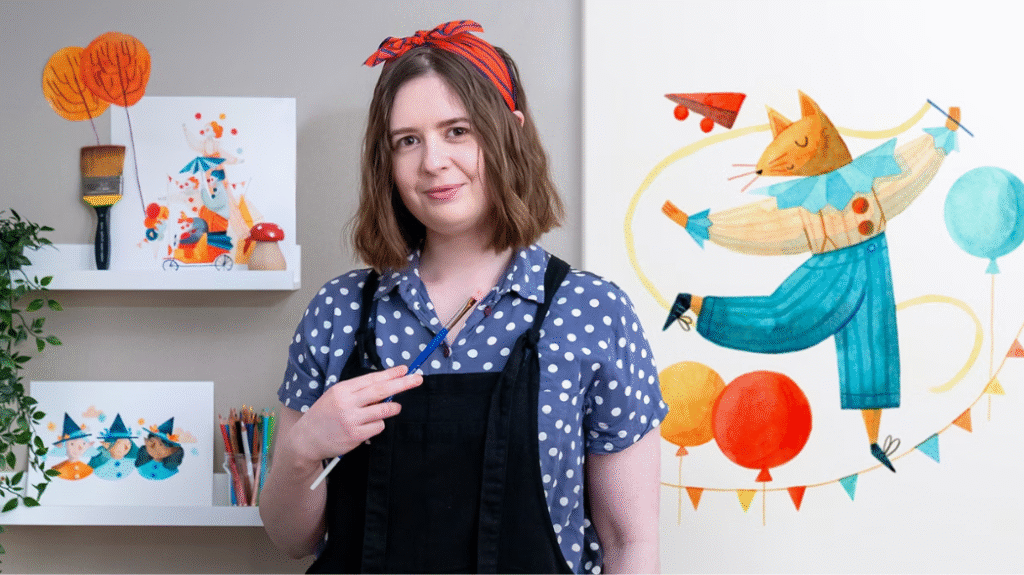Writing for children may look easy—but creating a story that captures their imagination, delivers a message, and holds their attention is both an art and a skill. Narrative techniques play a huge role in how well a children’s book connects with its young readers.
In this guide, we’ll explore the most effective narrative techniques used in children’s books—from structure and voice to character development and rhythm—so you can write stories that are fun, engaging, and meaningful.
Section 1: Understand Your Audience
Before diving into techniques, it’s vital to understand who you’re writing for. Children’s books span a wide range of ages, and each stage has unique needs:
📘 Board Books (0–3 years)
Simple visuals, rhythm, repetition, and touch/feel elements.
📗 Picture Books (3–7 years)
Short narratives, colorful illustrations, basic plots, and clear emotions.
📙 Early Readers (5–8 years)
Simple chapters, straightforward vocabulary, slightly more complex plots.
📕 Middle Grade (8–12 years)
Full stories with subplots, deeper characters, and humor or emotion.
📌 Section 2: Show, Don’t Tell
Children learn best through examples and visuals. Avoid over-explaining emotions or actions.
❌ Instead of:
“Emma was scared.”
✅ Try:
“Emma’s hands trembled as she peeked under the bed.”
This engages their imagination and makes the scene more memorable.
📌 Section 3: Use a Strong Narrative Voice
Children love a voice that feels like a friend or playful guide. Choose your tone based on the age group:
🎙️ Narrator Types:
-
First Person – Personal and direct (“I went to the forest…”)
-
Second Person – Rare, but interactive (“You open the magic book…”)
-
Third Person Limited – Most common (“Sam ran across the field…”)
Keep the voice consistent, friendly, and age-appropriate.
📌 Section 4: Simple, Vivid Language
Use short sentences, clear words, and rich sensory detail:
-
Avoid complex metaphors
-
Use repetition (kids love it)
-
Describe sights, sounds, and feelings
Example:
Instead of “The weather was bad,” say,
“The sky growled. Rain splashed on Max’s boots as the wind tugged his coat.”
📌 Section 5: Strong, Relatable Characters
Great children’s stories revolve around characters kids can root for.
🎭 Traits of Relatable Characters:
-
Have a clear goal or problem
-
Show emotions kids understand (fear, joy, jealousy)
-
Show growth by the end
-
Often have a flaw they overcome
🧒 Examples:
-
A shy turtle who learns to speak up
-
A curious robot who wants to be human
-
A cat who wants to fly
Use animals, toys, or children as main characters—something familiar but imaginative.
📌 Section 6: Structure and Plot
Children’s stories usually follow a simple but effective structure:
🧩 1. Beginning: Setup
-
Introduce character
-
Show the setting
-
Present the problem
🎢 2. Middle: Conflict
-
Attempts to solve the problem
-
Small failures or learning moments
🏁 3. End: Resolution
-
Problem solved
-
Lesson learned
-
Happy, hopeful ending
📌 Section 7: Repetition and Rhyme
These techniques help with memory, rhythm, and fun:
🔁 Repetition:
-
Builds pattern and predictability
-
Encourages participation (especially in read-aloud books)
“I’ll huff and I’ll puff and I’ll blow your house down!”
🎶 Rhyme:
-
Adds musicality
-
Helps young readers anticipate words
-
Great for bedtime stories
Example:
The moon is high, the stars all glow,
It’s time for dreams to softly grow.
📌 Section 8: Dialogue and Interaction
Kids love when characters talk and express themselves.
💬 Tips for Dialogue:
-
Keep it simple and natural
-
Use dialogue to reveal character traits
-
Give each character a unique voice
Example:
“Let’s build a rocket!” shouted Mia.
“A rocket? We don’t even have glue!” said Max.
📌 Section 9: Visual and Verbal Balance
In picture books, text and illustrations work hand in hand. Don’t overwrite what the image shows.
📉 Less Text = More Imagination
Let illustrations tell part of the story. Write only what’s essential to the action or emotion.
📌 Section 10: Add Meaning Without Preaching
Children’s books often teach lessons—but kids don’t like to be lectured.
✅ Do this:
Let the story naturally show the value (like kindness, sharing, honesty).
❌ Avoid this:
“Always tell the truth.”
Instead, show a character who lies, faces trouble, and learns why truth matters.
📌 Section 11: Rhythm and Pacing
Keep the story moving. Each page should bring action, emotion, or progress.
-
Use page turns to build suspense
-
Keep paragraphs short
-
End pages with curiosity (“But what she saw next…”)
📌 Section 12: Endings That Satisfy
Endings should feel complete and satisfying for the child:
-
Wrap up the main problem
-
End on a positive or hopeful note
-
Optionally, include a small twist or humor
Example:
The dragon wasn’t scary after all—it just wanted someone to read it a bedtime story.
✅ Conclusion
Writing a great children’s book isn’t about using fancy words—it’s about speaking directly to a child’s heart and imagination. With the right narrative techniques, you can create stories that are fun, meaningful, and unforgettable.
Remember:
-
Keep it simple but rich
-
Use repetition, rhythm, and emotion
-
Let kids see themselves in your characters
-
Make your story one they’ll want to hear again and again
